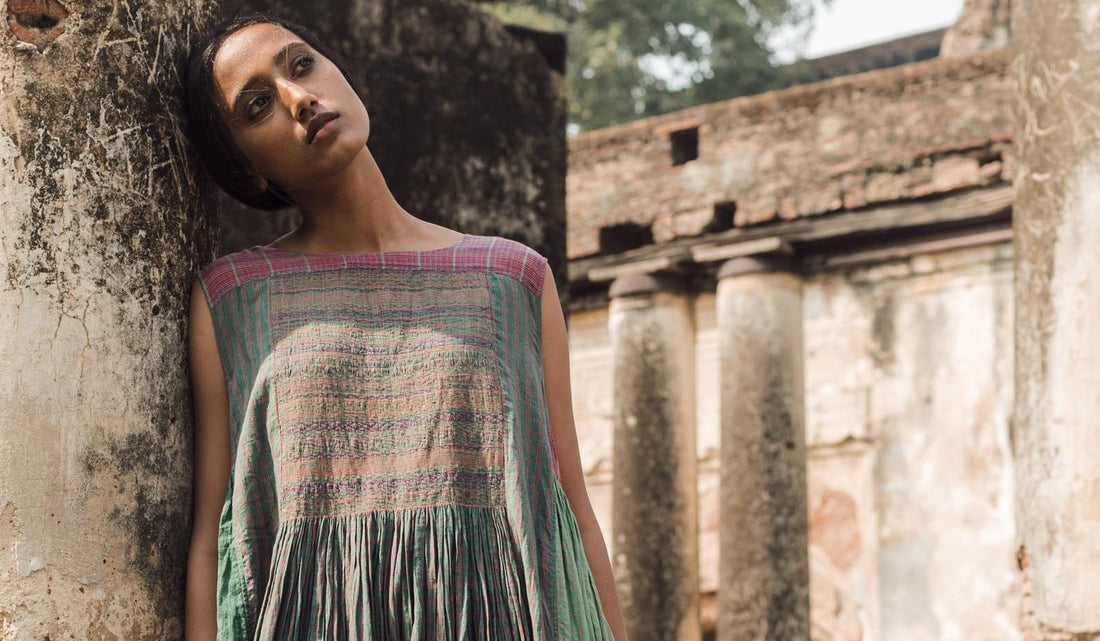
Dhakai Jamdani

Indian fashion company Injiri is part of the Selvedge World Fair, celebrating textile traditions from 50 countries. Here, founder Chinar Farooqui tells us about the process of creating Jamdani, a handwoven muslin fabric. “Having its origin in Dhaka, Bangladesh, Jamdani, which is more popularly called Dhakai Jamdani has always been seen as an enchanting textile. Some referred to it as ‘woven air’ while others called it the ‘flowered and figured’ muslin owing to the name ‘jamdani’ which is derived from ‘jama’ meaning flower and ‘dani’ meaning vase. Jamdani collectively stands for handwoven cotton sarees and yardages highlighting beautiful floral motifs. The creation of this elegant fabric takes its time since it is hand woven and extra weft made from slightly thicker yarn is interlaced using a shuttle with the standard weft threads to create the motifs.”

“As accounted by Saiful Islam in ‘Muslin Our Story’ (Drik Picture Library Limited, 2016), contemporary jamdani manufacturers continue to follow many of the age old ways of muslin-making, with the specialists still carrying out the appropriate stages of the manufacturing process. After procurement, the natural or pre-dyed yarn is washed, starched and wound on a cylindrical bamboo frame, known as natai and is left to dry. After processing the yarn, the preparation of the weft is done by inserting it in the reed while the warp is applied on the end roll of the loom. In jamdani weaving, two weavers sit side by side at the pit loom working in tandem. They work simultaneously counting the individual spools of thread across the width of the saree using a kandi, the needle. The shuttle is passed, the reed frame pulled inwards and the process is repeated all over again.”

“What makes Jamdani weaving process unique is the fact that the designs are not drawn on the fabric. Instead, the designs are made on a translucent graph paper which is placed under the warps. Each motif used in this technique has a unique name based on what it represents, such as panna hajar (thousand emeralds), kalka (paisley), butidar (small flowers), fulwar (flowers arranged in straight rows), tersa (diagonal patterns), jalar (motifs covering the entire saree), dhuria (polka spots) and charkona (rectangular motifs).”
For the full article and more detail on other traditional textile techniques visit www.injiri.co.in
Visit Injiri at Selvedge World Fair 2020. Event content is open to ticket holders until 10 September.
